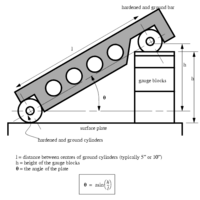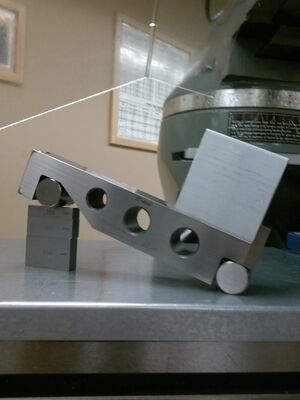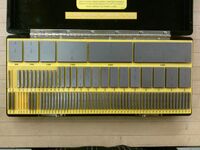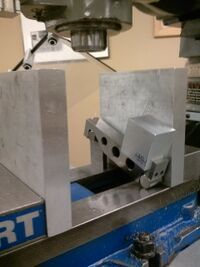Sine Bar
Jump to navigation
Jump to search
The primary use of a Sine Bar is to position the part being machined at a precision angle. Setting up a part at a precise angle can be crucial when using a mill or a grinder. The Sine Bar is used in conjunction with gage blocks. Gage blocks are metal blocks that are ground to extremely precise thicknesses. They are made out of a hardened metal material with a high quality finish that resists, scratching, denting, and corrosion.
Procedure
| Step | Description |
|---|---|
Location
| |
 Step Two: Form Triange, REF.[1] |
Forming Triangle
|
Mill Setup
|
Common Angles
| Angle of block v. height needed* | |
|---|---|
| Angle (deg) | height (in) |
| 5 | 0.4358 |
| 10 | 0.8682 |
| 15 | 1.2941 |
| 20 | 1.7101 |
| 25 | 2.1131 |
| 30 | 2.5000 |
| 35 | 2.8679 |
| 40 | 3.2139 |
| 45 | 3.5355 |
| 50 | 3.8302 |
| 55 | 4.0958 |
| 60 | 4.3301 |
*heights are given for a 5-inch sine bar


